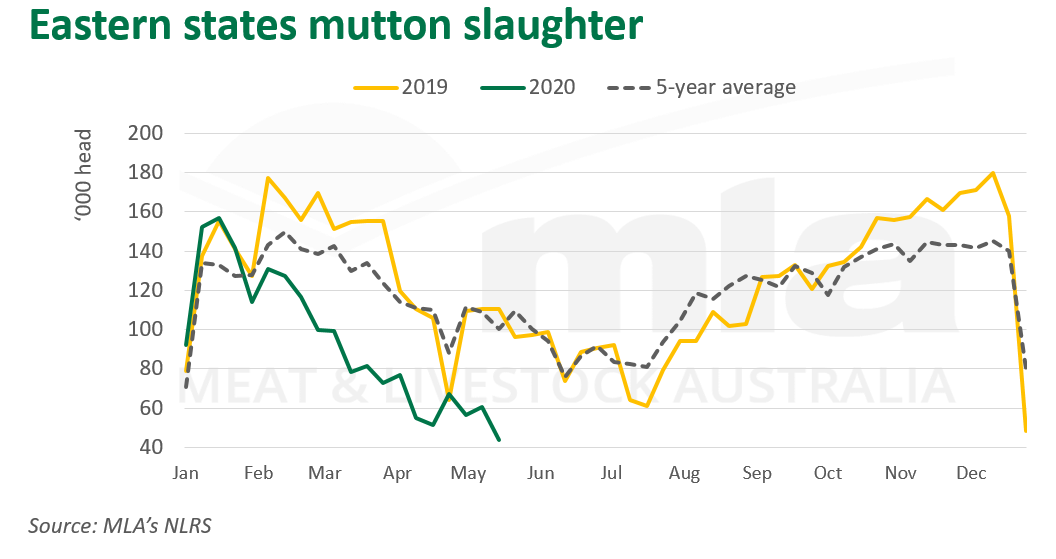Key points:
- Sheep slaughter declined to 46,000 head for the week ending 15 May.
- Victoria sheep slaughter was reported 78% lower compared to year ago levels.
- CV-19 mutton indicator has advanced 8% in May as supply constraints progress.
Eastern states sheep slaughter continued to contract for the week ending 15 May, reported at 43,600 head. Excluding public holiday disrupted weeks this figure represents the lowest weekly throughput since June 2011, at 36,700 head. The low point for supply can be expected during the winter months suggesting room for sheep throughput to contract to a greater extent. The trends are indicative of producers holding and rebuilding flocks and finding encouragement in positive winter outlooks.
The fact that sheep slaughter has declined to this extent much earlier than would be expected highlights the challenge processors will face during the winter months, at a time when lamb slaughter is also anticipated to be extremely tight. Victoria sheep slaughter was down sharply last week, to 9,800 head back 78% year on year, with rainfall falling across much of the state. NSW followed a similar trend contracting 46% compared to year ago levels to 26,184 head. Despite weekly increases, South Australia sheep slaughter fell 61% year on year, to 5,581 head.
Looking ahead, winter throughput is likely to fall below year ago levels across all states. The impact of dwindling supply on both sheep and lambs prices has seen a modest uptick in prices throughout May. The CV-19 mutton indicator increased 8% last week to average $167/head. The forecast supply constraints should tip the balance in favor of price support during winter. However, the global outlook does provide some headwinds and could keep prices below the mid-year peak in 2019.

© Meat & Livestock Australia Limited, 2020
To build your own custom report with MLA’s market information tool click .
To view the specification of the indicators reported by MLA’s ³Ô¹ÏÍøÕ¾ Livestock Reporting Service click .




